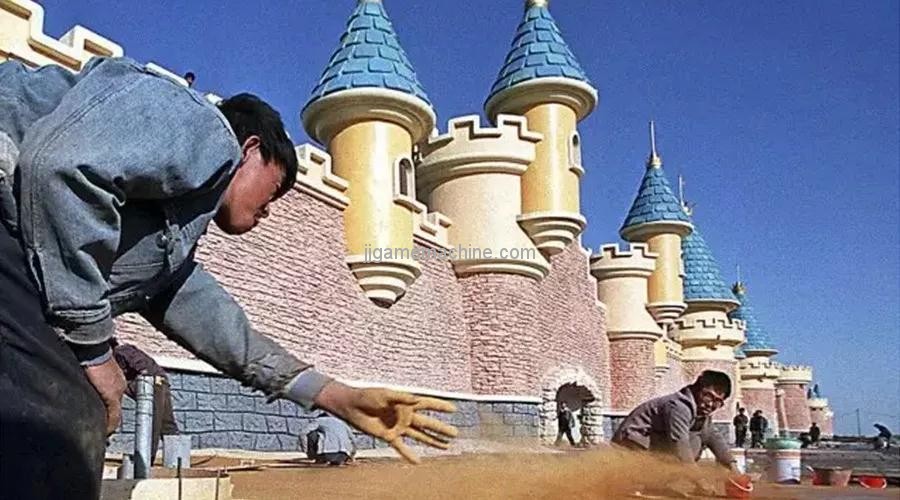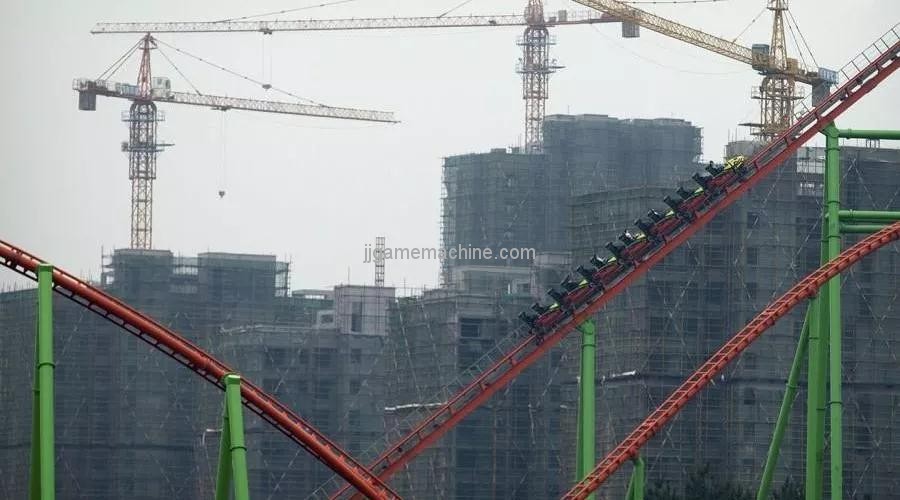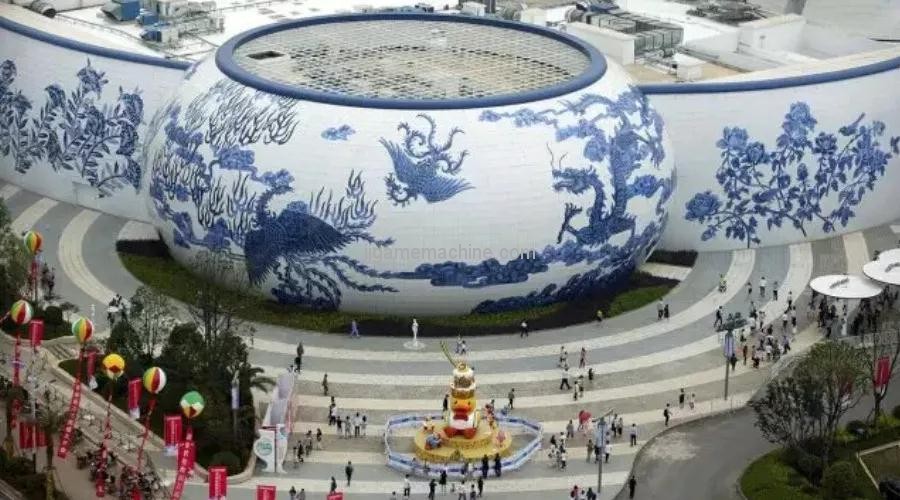Chinese-style theme park: cottage, enclosure and unfinished tail.
Along with the high tourist enthusiasm of the Chinese people, China has ushered in a theme park boom. However, developers and local governments who are eager for quick success are blindly dubbed into a Chinese-style theme park with a lack of personality.
In 1989, Shenzhen took the lead in building China's first theme park, “Jinxiu Zhonghua”, which condensed famous scenic spots from all over the world. The selling point of a day trip to China attracted the Chinese who had a growing desire for tourism at that time, and recovered the cost within one year. After that, Shenzhen has repaired two other theme parks - "Luxury Village" and "Window of the World". The picture shows Shenzhen, May 18, 2007, visitors are visiting the "Window of the World".

The success of Shenzhen has triggered a hot landscape of cottages across the country. For a time, all localities were creating "national villages" and "little people's countries", replicating "Egyptian pyramids", "Paris Tower" and "American White House". The picture shows a woman on a suburb of Shijiazhuang, Hebei Province, on May 15, 2014. She climbed a wooden frame and took a photo with the fake Sphinx. This is an unfinished movie theme park.

In 1996, Shanghai lost to Hong Kong in the competition for Disneyland. However, all parts of China took the opportunity to play the slogan of "Oriental Disney" to imitate Disney's castle buildings. Roller coasters, pirate ships, and combination castles have become the model of the "Disney" in the cottages. Pictured in 1998, Beijing, under construction at the Wardland Amusement Park, developers want to replicate a larger Disneyland.

No longer a quiet sightseeing theme park, developers are beginning to introduce exciting dynamic rides. Hanging roller coasters, high water tunnels, and jumping machines... These rides, which constantly refreshed the tourist's stimulating index, made the Chinese who had been depressed for a long time begin to learn to scream. The picture shows Guangzhou, Changlong Amusement Park on April 23, 2015.

The "newest and most exciting" amusement equipment has become the main selling point of theme parks. The success of the theme park has also led to the surrounding hotels and real estate, becoming a coveted cream project between the government and real estate developers. The picture shows the opening of the Wanda Theme Park, which was built by China's largest private real estate developer on May 28, 2016 in Nanchang, Jiangxi. The background of the roller coaster in the park is the real estate under construction.
By building well-known theme parks, the areas that have no economic value will be transformed into tourist attractions, and the surrounding land prices will be raised to obtain greater profits. The construction of theme parks has become a tool for real estate developers and local government to circle money. The picture shows the opening of the Hello Kitty theme park in Anji, Zhejiang, on November 28, 2014. The entire project covers an area of about 900 acres and includes many facilities such as hotels, restaurants and entertainment.

But China's theme parks lack real creativity, blindly imitating and shoddy. In order to meet the diverse leisure and entertainment needs of tourists, the theme park began to combine interactive technology to launch an interactive entertainment experience. But often it is 3D glasses, ring screen, plus a special effect chair that will vibrate and spray water jet, which is called 4D experience. The picture shows the visitors in the space travel theme park on April 18, 2004 in Beijing.

China's theme parks lack individuality, copying and copying, simulating and emulating, and lacking classic characters like Disney. After a visit, visitors lack the motivation to repeat consumption, which leads to a low rate of visits. The picture shows the opening of the Wanda Theme Park in Nanchang, Jiangxi on May 28, 2016. Wanda is heavily invested in creating a world-class theme park with local characteristics.

The so-called local characteristics are just a model of Chinese antique architecture combined with a roller coaster. There is no clear theme, lack of culture and uniqueness. Only non-replicability determines the vitality and survival cycle of the theme park. The picture shows the tourist car in Wanda Theme Park on May 28, 2016 in Nanchang, Jiangxi. The chairman of Wanda said that "it will make Disney China unable to make a profit in the next 10 to 20 years."
The Yunnan "Little Dwarfs" theme park has been controversial since its birth. The creators invited the pockets from all over the country to form a "Little People's Art Troupe", which performs daily for visitors in the park. Critics say that showing dwarves is the most misleading and unethical move to cater to people's curiosity. The picture shows the Kunming, Yunnan, "Dwarf" kingdom on January 18, 2016.
Local governments have also spent huge sums of money to create anti-Japanese war parks to promote patriotism. The picture shows that on October 20, 2012, in Wuxiang, Shanxi, the local government spent 50 billion to build an anti-Japanese war theme park. A tourist dressed as a Japanese soldier to conduct a "guerrilla warfare."
Government leadership has always been the model of China's theme park. There are government investments behind the projects, and even full investment. In pursuit of political achievements, the theme parks were blindly built without feasibility analysis, and many parks were closed down, and many of them were involved in huge loans guaranteed by the government. The picture shows Beijing, July 16, 2008, where the bulldozer will be transformed into a Disney-themed theme park.

Once the theme park is alive and closed, it often becomes a local debt. The picture shows the abandoned Wardland amusement park on the outskirts of Beijing on December 5, 2011. In 1994, the Beijing government introduced the Wardland project to lease more than 1,000 acres of land in five villages to developers. Later, due to land acquisition disputes between developers, local governments and villagers, the project was shut down and the huge and unfinished buildings were retained.
After several rounds of bankruptcies in the past 30 years, there are still nearly 3,000 theme parks nationwide. According to the zero survey, 70% of them are at a loss, 20% are flat, and only about 10% are profitable. Reducing the intervention of local governments and making the development of theme parks fully marketable has become an appeal in the industry. The picture shows the last walk before the opening of the "Mummy Return Theme Park" at the East Gate of Beijing Chaoyang Park on August 20, 2006.

On June 16, 2016, the much anticipated Shanghai Disneyland officially opened. To facilitate the $5.5 billion construction of the Shanghai Disney Resort, Disney had to give control to the government. In addition to agreeing to deliver a large percentage of profits, Disney agreed to let the Shanghai government have a say in the operation of the theme park. At the opening ceremony, the Disney CEO took a seat for Chinese officials.
The theme parks built around the country have become superficial cultural expressions that developers are eager for quick success and local governments are pursuing political achievements.
Government leadership has always been the model of China's theme park. There are government investments behind the projects, and even full investment. Blindly building theme parks, coupled with poor management, many parks closed down, and they were involved in huge loans guaranteed by the government.
In the face of a wave of threats to the upcoming international theme park, how can local theme parks avoid the end? How to break through? This is a question worthy of consideration by the industry and the government.











